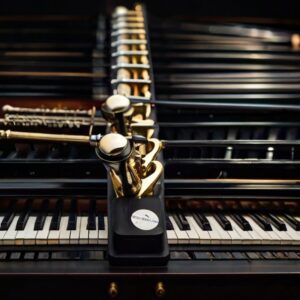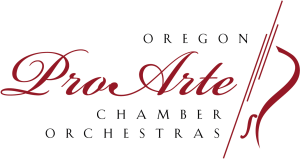When you think of classical music, your mind might wander to grand concert halls, sophisticated attire, and musicians immersed in sheets of complex compositions. Yet, this genre, storied and intricate, finds its way into the bustling, vibrant world of film and pop culture, often without us even realizing it.
Classical Music in Film Scores
The integration of classical music within the fabric of film scores is a deliberate decision that taps into the deep wells of human emotion and cultural memory that classical compositions embody. When a scene is set against the backdrop of a piece like Beethoven’s Symphony No. 7 Movement II, as skillfully woven into the emotional climax of “The King’s Speech,” the effect is not just auditory but viscerally emotional. The music, with its solemn yet uplifting tempo, mirrors the protagonist’s internal battle and eventual triumph, elevating the narrative from simply being watched to being deeply felt by the audience. The iconic opening of “2001: A Space Odyssey,” complemented by the majestic and awe-inspiring tones of Richard Strauss’ “Also sprach Zarathustra,” transcends conventional storytelling. It transforms the scene into a universal moment of cosmic birth and existential wonder, leveraging the composition’s grandeur to expand the viewer’s emotional and cognitive engagement with the film. This intricate dance between visual and musical storytelling elements showcases the unparalleled ability of classical music to amplify cinematic moments, making them more poignant, memorable, and impactful. Classical music, in this context, does more than accompany the narrative, it deepens and enriches the film’s emotional texture, inviting the audience into a more complex and profound engagement with the story being told on the screen.
Classical Samples in Pop Music

This blending of classical samples with modern pop music genres goes beyond merging different musical timelines, it represents a creative alchemy that infuses contemporary songs with a sense of depth, sophistication, and emotional resonance that only centuries-old music can provide. When listeners encounter the familiar strains of Pachelbel’s Canon in D woven into the fabric of Coolio’s “C U When U Get There,” the effect is both comforting and evocative. The classical piece, known for its harmonious and repetitive progression, lends a certain timelessness and universality to the song, enriching its lyrical themes of life’s journey and the inevitability of meeting again. When Nas samples Carl Orff’s “Carmina Burana” in “Hate Me Now,” the dramatic and almost ominous choral arrangement intensifies the song’s themes of struggle, triumph, and defiance. In these examples, the classical elements do not serve as a backdrop but become integral to the emotive power and thematic depth of the music. This innovative synthesis of genres creates a rich tapestry of sounds that appeals to a broad audience, bridging the gap between classical purists and pop enthusiasts. It showcases the timeless nature of classical music, proving that its emotional pull and aesthetic beauty can transcend genre boundaries and resonate within the heart of contemporary culture. Through this dynamic interplay of past and present, classical samples in pop music invite listeners on a nuanced auditory journey, enriching the pop music landscape with layers of meaning and a touch of historical legacy.
Composers Bridging Worlds
These modern-day composers, such as Hans Zimmer, John Williams, and Ennio Morricone, serve as the architects of auditory emotion, strategically employing classical music’s rich tapestry to construct soundscapes that transcend the auditory realm and deeply touch the human soul. Zimmer, with his knack for blending electronic music with traditional orchestral arrangements, has redefined film scores for movies like “Inception” and “Gladiator,” embedding classical sensibilities into narratives that span historical epics to futuristic explorations. John Williams, a legend in his own right, has an unparalleled ability to evoke nostalgia, adventure, and heroism through his compositions, as heard in the iconic themes of “Star Wars,” “Indiana Jones,” and “Harry Potter.” His work is a testament to how classical motifs, when reimagined with a contemporary twist, can become ingrained in the cultural consciousness. Ennio Morricone, with his hauntingly beautiful scores, such as the unforgettable melodies of “The Good, the Bad and the Ugly,” used classical methodology to redefine the sound of the western genre, wrapping it in a cloak of timeless elegance and raw emotion. These composers, through their visionary work, not only bridge the gap between the classical and contemporary worlds but also between the visual and the auditory, creating a symbiotic relationship where music and imagery coalesce to form a more immersive and emotionally resonant experience. Their achievements highlight the enduring relevance and adaptability of classical music, demonstrating its capability to enrich modern storytelling and connect with audiences across diverse backgrounds and eras.
Documentaries and Biopics
The exploration of classical music through documentaries and biopics serves as a bridge connecting the past with the present, offering a window into the complex lives, unyielding passions, and the creative genius of some of the world’s most revered composers. Films like “Amadeus” not only dramatize the life of Mozart but also delve into the intricacies of his genius, his rivalry with Salieri, and the beauty of his compositions, creating a tapestry that is both visually stunning and aurally captivating. The portrayal of Mozart’s life is nota historical recount, it is an invitation to understand the man behind the music, making his compositions all the more poignant for audiences who witness the breadth of his human experience – from the heights of success to the depths of despair. “Immortal Beloved” offers an intimate glimpse into Beethoven’s battle with deafness, a journey that could have silenced any other musician, but instead, empowered him to create some of the most powerful music the world has ever known. Through these narratives, documentaries, and biopics transform classical music from an abstract form of high art into a visceral expression of human emotion and resilience, accessible and deeply moving to contemporary audiences. They enchant, narrate, and inspire, fostering a deeper appreciation and understanding of classical music and its timeless relevance in the modern world. Through the lens of film, the stories of these composers and their works are not just preserved; they are vividly brought to life, resonating with new generations and inviting them into the rich, emotive world of classical music.
Classical Music in Advertising
In advertising, classical music has carved out a significant niche. Advertisers use it to evoke a range of emotions, from the elegance and luxury associated with high-end brands to the universal, heartwarming appeal needed for family-oriented products. The use of Vivaldi’s “Spring” from “The Four Seasons” in commercials for everything from cars to chocolate to software illustrates the versatility and enduring appeal of classical music in setting a tone and communicating a message without words.
